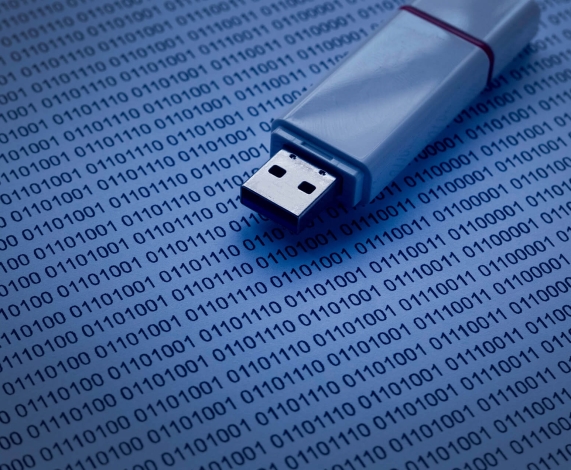What you could clone yourself digitally? Just imagine the potential of having a clone to test different scenarios and outcomes, enabling you to make informed and improved decisions. Sounds like science fiction, right? But this is precisely where the concept of a digital twin comes into play.
By creating a digital replica of yourself or an object, this technology allows you to explore various possibilities and plan accordingly. It offers you the unique ability to peer into the future, empowering you to strategize effectively, maximize success, and minimize risks. While it's an interesting concept, does it help us make better decisions? Let's take a closer look.


What is a Digital Twin Anyways?
A digital twin is a virtual replica of a physical entity or system that updates and changes in real-time as its physical counterpart changes. The concept dates back to NASA's Apollo program, where engineers used a digital twin of the spacecraft to troubleshoot problems from thousands of miles away. Today, the technology has evolved into a multi-billion dollar industry set to reach $184.5 billion by 2030.
How Does it Work?
Digital twin technology relies on data, lots of it. Sensors embedded in the physical entity (say, a car engine) continuously collect data about the engine's performance, temperature, fuel efficiency, etc. This data is then sent to the digital twin in real-time. The digital twin uses this data to provide an accurate, up-to-date replica of the engine's state.
This isn't just a thought experiment. Real-world companies like General Electric are leveraging this technology today. GE uses digital twins to optimize the performance of its wind turbines. By monitoring the turbines through their digital counterparts, they can predict when maintenance is due, slashing downtime and saving some serious cash.


Applying Digital Twins Across Industries
Healthcare Revolution
In the future, your doctor won't just diagnose you based on symptoms and medical history. They'll also consult your digital twin—a constantly updated reflection of your health. This integration will enable personalized treatment plans and early disease prediction.
For instance, Memorial Sloan Kettering Cancer Center doctors use digital twins to optimize cancer treatment. They create a digital twin of each patient's tumor, incorporating genetic data, medical history, and treatment responses. This allows doctors to simulate different treatment options and predict their outcomes, maximizing treatment efficacy while minimizing side effects.
Smart Cities, Smarter Living
Have you ever wondered if urban planning and management could be as easy as playing SimCity? As cities grow more complex, finding sustainable and efficient solutions becomes increasingly important. With the help of digital twins, we can create a complete representation of a city's infrastructure, services, and even the behavior of its citizens.
For example, Singapore is currently developing a robust digital twin that can simulate and optimize various aspects of urban life. This technology can be used for everything from traffic management to energy consumption, ultimately shaping the way we live in cities of the future.


Industry 4.0 - Manufacturing Reimagined
Integrating digital twins in manufacturing processes can lead to predictive maintenance, reduced downtime, and cost savings. It also enables the creation of customized products on a mass scale. BMW, for instance, uses digital twins in its production process to simulate and optimize every step, from design to assembly, reducing errors and enhancing efficiency.
Eco-Friendly Engineering
Speaking of sustainability, digital twins are becoming invaluable in environmental engineering. These virtual replicas are helping experts model and predict the behavior of ecosystems, climate patterns, and even the impact of infrastructure projects.
Siemens, a global powerhouse in electronics and electrical engineering, utilizes digital twins of their wind turbines to predict the best locations for new turbines, optimize energy production, and plan effective maintenance schedules.


The Rise of AI-Enhanced Twins
Artificial Intelligence (AI) is the backbone of digital twins. As AI algorithms become more sophisticated, so do the capabilities of these virtual doppelgangers. Future digital twins will mimic their real-world counterparts and autonomously make decisions, learning from their experiences.
In autonomous vehicles, AI-enhanced digital twins will ensure safer and more efficient navigation. Companies like Tesla use digital twins to test and improve their self-driving algorithms, pushing the boundaries of self-driving technology.
Digital Twins as a Service (DTaaS) and Cloud Solutions
As we move towards 2024, we may see more companies offering Digital Twins As A Service, democratizing access and making it affordable and scalable for organizations of all sizes. DTaaS is an attractive option for organizations looking to leverage digital twins without significant upfront investment, enabling them to access digital workflows and insights on a subscription basis.
Microsoft, for instance, offers Azure Digital Twins, a service that allows businesses to create digital representations of real-world things, places, business processes, and people.


Wrapping It Up
Digital twins are no longer confined to science fiction; they're here, evolving and reshaping industries. From healthcare to manufacturing, from smart cities to environmental engineering, digital twins are indispensable tools for informed decision-making and efficient operations.
As technology continues to advance, so will the capabilities of these digital doppelgangers. The question is, how will you incorporate them into your business to drive innovation and success?





